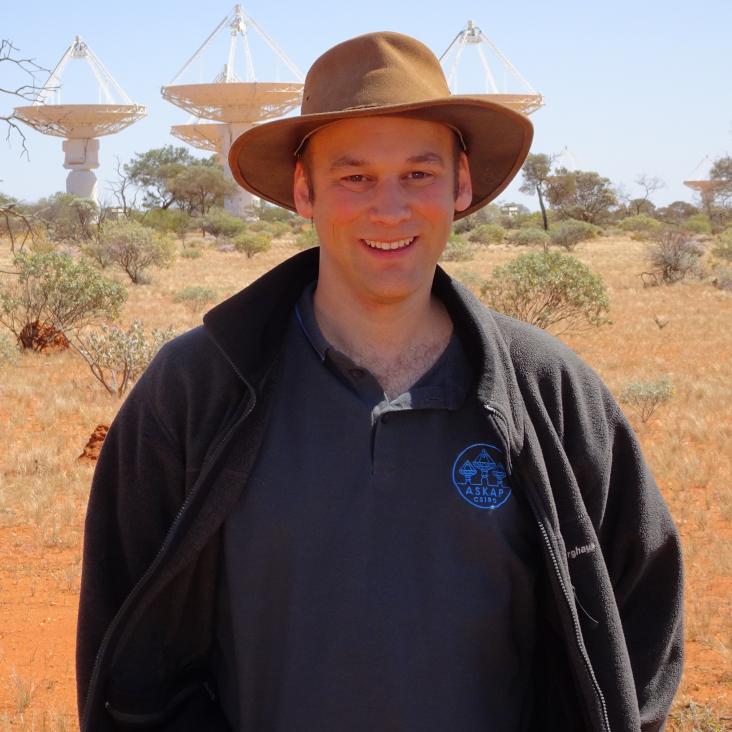ANOMALOUS MICROWAVE EMISSION FROM THE H ii REGION RCW175
The Astrophysical Journal American Astronomical Society 690:2 (2009) 1585-1589
Anomalous microwave emission from the H II region RCW175
Astrophysical Journal 690:2 (2009) 1585-1589
Abstract:
We present evidence for anomalous microwave emission in the RCW175 H II region. Motivated by 33 GHz 13′ resolution data from the Very Small Array (VSA), we observed RCW175 at 31 GHz with the Cosmic Background Imager (CBI) at a resolution of 4′. The region consists of two distinct components, G29.0-0.6 and G29.1-0.7, which are detected at high signal-to-noise ratio. The integrated flux density is 5.97 0.30 Jy at 31 GHz, in good agreement with the VSA. The 31 GHz flux density is 3.28 0.38 Jy (8.6σ) above the expected value from optically thin free-free emission based on lower frequency radio data and thermal dust constrained by IRAS and WMAP data. Conventional emission mechanisms such as optically thick emission from ultracompact H II regions cannot easily account for this excess. We interpret the excess as evidence for electric dipole emission from small spinning dust grains, which does provide an adequate fit to the data. © 2009. The American Astronomical Society. All rights reserved.A pilot search for extragalactic OH absorption with FAST
MONTHLY NOTICES OF THE ROYAL ASTRONOMICAL SOCIETY 499:3 3085-3093
Abstract:
© 2020 The Author(s) Published by Oxford University Press on behalf of the Royal Astronomical Society. OH absorption is currently the only viable way to detect OH molecules in non-masing galaxies at cosmological distances. There have been only six such detections at z > 0.05 to date and so it is hard to put a statistically robust constraint on OH column densities in distant galaxies. We carried out a pilot OH absorption survey towards eight associated and one intervening H i 21-cm absorbers using the Five-hundred-meter Aperture Spherical radio Telescope (FAST). We were able to constrain the OH abundance relative to H i ([OH]/[H i]) to be lower than 10-6 ∼10-8 for redshifts z [0.1919, 0.2241]. Although no individual detection was made, stacking three associated absorbers free of RFI provides a sensitive OH column density 3σ upper-limit $\sim 1.57 ×1014(TxOH/10\,\mathrmK)(1/fcOH}cm-2, which corresponds to a [OH]/[H i] < 5.45 × 10-8. Combining with archival data, we show that associated absorbers have a slightly lower OH abundance than intervening absorbers. Our results are consistent with a trend of decreasing OH abundance with decreasing redshift.A successful search for intervening 21cm H I absorption in galaxies at 0.4 < z <1.0 with the Australian square kilometre array pathfinder (ASKAP)
MONTHLY NOTICES OF THE ROYAL ASTRONOMICAL SOCIETY 499:3 4293-4311


